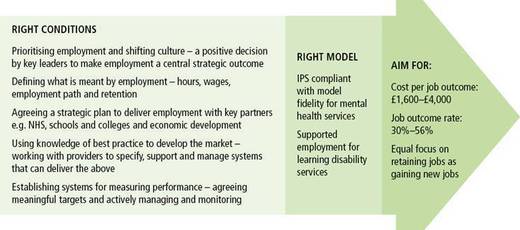Employment Support: Let’s Start by Doing More with the Same

Rich Watts from The National Development Team for Inclusion (NDTi) talks about whether we can get more from employment support services without spending more. NDTI is a not-for-profit organisation which works to promote inclusive lives for people who are most at risk of exclusion and who may need support to lead a full life.
In the last four years, the demand for austerity has led to calls for “more for less”: can we deliver more (outcomes, services) for less (money)?
The question it’s worth asking before this, though, is: “Can we deliver more with the same?”
It’s then less a question about the levels of funding in any policy area or system and more a need to ask whether what we’re doing with what we have is good enough.
For employment support provided through local councils and the NHS for disabled people (especially people with mental health problems or learning disabilities), the answer to that question is: “not yet”.
Only around a third of all such employment support provided is based on what we know works, namely ‘place and train’ models. These 'place and train' models focus on getting someone into a job (or keeping one) and then supporting / training them whilst they’re in the job. Individual Placement Support (IPS) for people with mental health problems is one such example of this approach.
These are different to 'train and place' models, which focus on preparing someone for the workplace before they look for and get a job.
Some recent, comprehensive research has shown that these evidence-based approaches:
- Are better value for money than non-evidence-based approaches
- Achieve more predictable job outcome rates than non-evidence-based approaches
- Have an equal focus on keeping people in jobs as they do on supporting people to gain new jobs.
Whilst we should be careful in using data too liberally, it can be estimated that using evidence-based approaches could support around twice the number of disabled people to gain or retain a job than using the current mix of evidence-based and non-evidenced-based models.
Focusing on the numbers alone won’t be enough to secure more for the same. The right conditions also have to be in place.
There are five things that need to be present for any area looking to ensure effective supported employment is in place. These are summarised in this diagram:

With the right conditions and the right model in place, local authorities and NHS organisations can start to get more for the same when it comes to supported employment in their local area.
At a time when we know the DWP’s Work Programme isn’t working for disabled people – as shown by Disability Rights UK– this has to be a great place to start.










